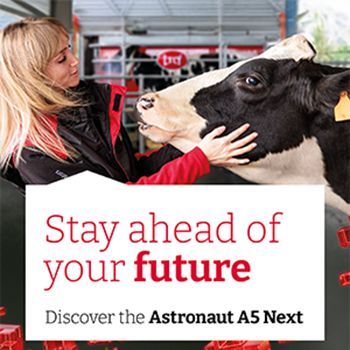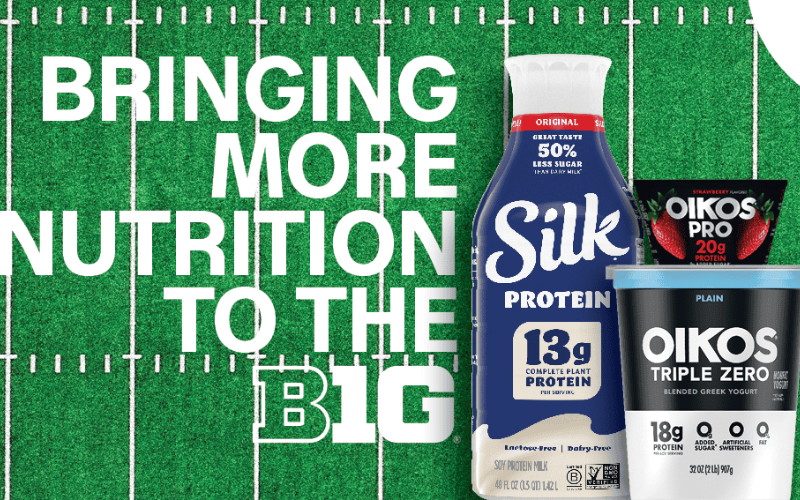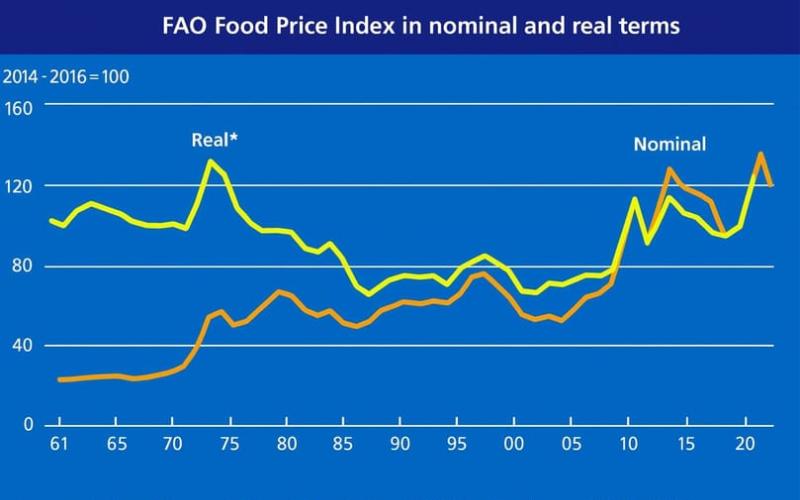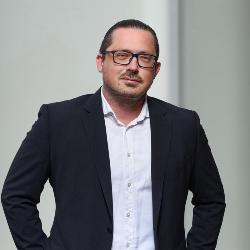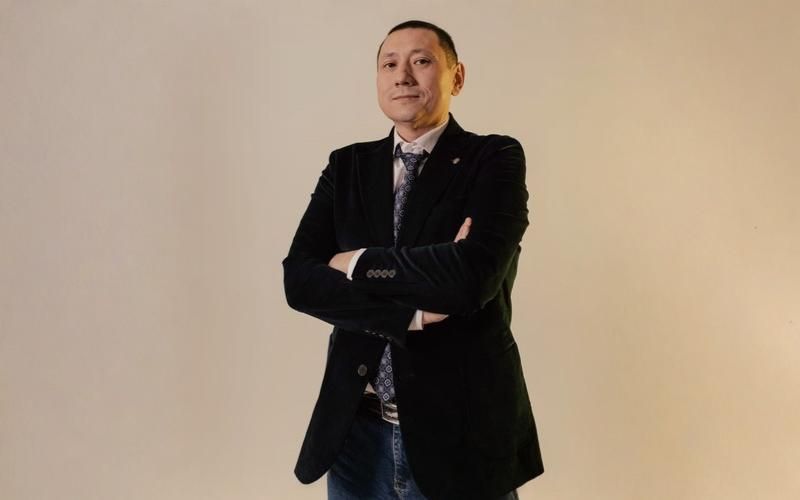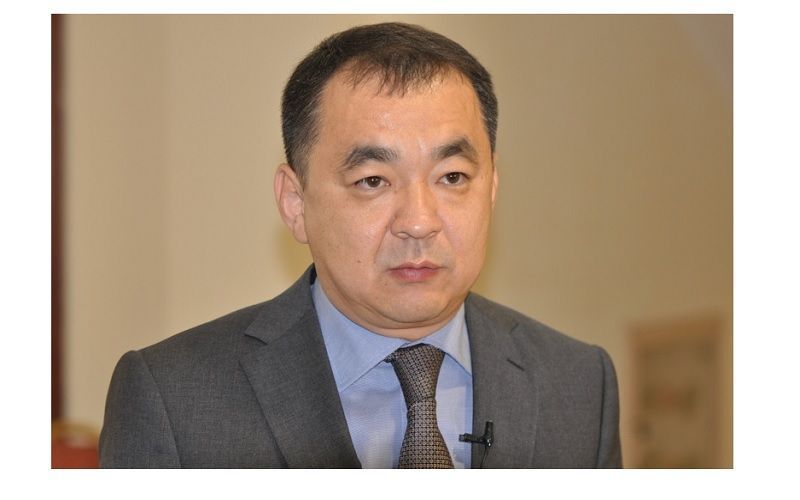Evolution in veterinary medicine: Cowow - an innovative disease prevention and control system saves health and improve productivity
Sourse: DairyNews.today
In an interview with Barys Fiodarau, founder of the unique technology company Cowon, DairyNews.today discussed how their innovative diagnostic system could transform veterinary medicine and agriculture. From early disease detection in animals to expanding into the global market, Boris shared how his team has been developing technologies since 2000 that not only enhance diagnostic accuracy but also revolutionize disease prevention approaches in the agricultural sector.
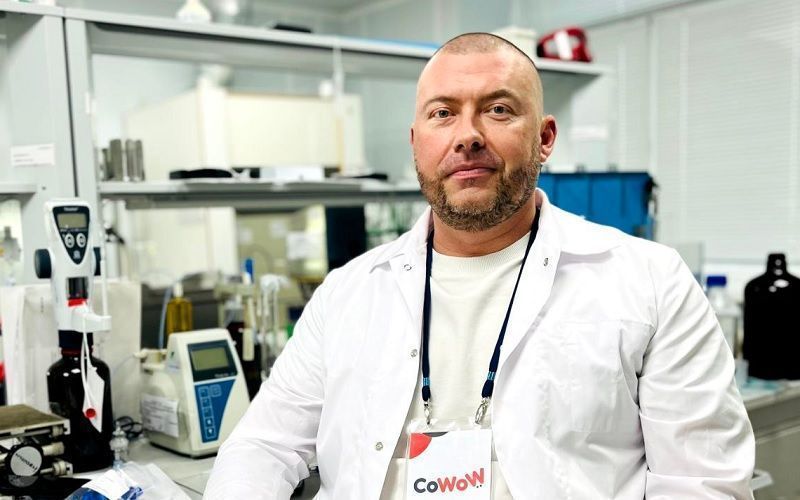
Barys, tell us a little about your company—what it does, how long it has been in the market, and what makes it unique.
— Our company is a strong team of scientists and developers. We have been engaged in this work for 25 years, a field to which some of us have dedicated most of our lives.
More than 20 years ago, based on our own scientific discoveries, we developed a new medical diagnostic technology. Its main advantage lies in its exceptionally high accuracy of 94% and the speed of analysis—just 35 seconds. Nothing like it exists anywhere in the world. In 2005, we proved the effectiveness of our method within the scientific community and received state registration for this new medical approach. Since then, we have worked extensively on developing systems, manufacturing equipment, and expanding the functionality and applications of our technology. One of the industries where we saw great potential was agriculture, particularly livestock farming.
That’s an interesting approach. Why animals? Why did you start with this segment?
— We initially focused on diagnostics in human medicine, and to this day, the majority of our scientific and practical work is still in that field. We manufacture several types of diagnostic equipment used in medical institutions. However, we have always aimed to stay ahead of the curve, developing systems that were slightly ahead of their time.
As early as 2010, we laid the groundwork for creating automated diagnostic systems. In 2016, we conducted the first telemedicine trials of our system in collaboration with the Ministry of Health. The result of these efforts was a telemedicine system for automatic disease diagnosis—without a doctor’s involvement. The future of global medicine lies in such systems, which will make health diagnostics more accessible, fast, and simple.
However, we faced regulatory challenges, as diagnosing a patient without a doctor’s involvement is still legally restricted in human medicine. That’s why we shifted our focus and implemented the system in veterinary medicine, where no such legal restrictions exist. Our technology is capable of working with any living biological object with the same high level of accuracy.
These are quite impressive results. How did your work develop further?
— In 2019, we received our first international recognition for the effectiveness of our system through a scientific and practical collaboration with the Latvian University of Agriculture in Jelgava. After that, we focused on the complex and lengthy process of validating our technology and proving its effectiveness in patent offices worldwide. The most challenging process was the seven-year-long series of examinations and reviews conducted by U.S. agencies. However, our efforts paid off, and last year, we obtained several patents fr om the USPTO.
Throughout this period, our system has been in continuous industrial operation, undergoing reliability tests and proving its accuracy in detecting risks and early-stage diseases in cattle.
How large is the scale of your project? What are your plans for international expansion?
— This is a large-scale and highly effective project. The implementation of our technology has the potential to enhance entire industries wh ere it is applied.
Today, livestock farming is a high-tech industry that integrates modern technologies at every stage of the production process. However, determining in real time what is happening inside an animal, how its immune processes are developing, and when to take preventive action to avoid disease—this is something that no one else can do with absolute accuracy.
Existing systems can only detect a sick animal once it starts showing behavioral changes due to poor health, at which point it has already lost valuable resources. The immune system becomes depleted, and the disease progresses fr om a subclinical stage to a clinical one, causing measurable biochemical and physiological changes. The industry has achieved high production efficiency, but there is enormous potential in preventing resource losses due to disease and reducing treatment costs. Our technological system is the key to unlocking these opportunities.
We began preparing for international market entry five years ago. Our technology, branded as Cowow, was first showcased at the prestigious Expo 2020 in Dubai. This year, the Dairy Olympics in the UAE serves as a major springboard and an excellent opportunity to present our working systems to the world.
At our exhibition stand, we will showcase both a mobile medical health monitoring system for humans and an automated health monitoring system for animals. Event participants will be able to see our technologies in action and witness how they operate firsthand.
Who is your target audience? Who are the primary users of the Cowow system?
— We currently work with large meat and dairy farms. We are finalizing the adaptation of our system for use with camels. At the same time, we have not forgotten about small farms—we offer them an easy-to-use mobile rapid diagnostics system.
We also have projects backed by scientific and practical trials in poultry farming and egg production. Additionally, we are involved in national-level initiatives to create disease monitoring and early detection systems, including for infectious diseases. This year’s foot-and-mouth disease outbreaks in Europe only reinforce the importance and necessity of such systems.
That’s interesting. How much does your system cost? Who can afford it?
— It depends on the scale. For large farms with hundreds or thousands of animals, it is more cost-effective to install a monitoring system with continuous data collection and analysis. For small farms, we offer a more compact and affordable system.
As for the price, it is quite reasonable for the industry to implement. Especially considering the economic benefits—immediate disease prevention, reduced resource losses, and lower treatment costs.
You have serious scientific developments. What sets you apart from others working on similar technologies?
— We are not a startup, although we are in an active growth phase. We are a scientific and industrial company that has been developing and implementing high-tech medical solutions for 25 years.
Our team includes brilliant scientists, professors, and PhDs. We collaborate with leading research institutions and have access to cutting-edge studies. This enables us to solve challenges that other companies cannot. We don’t just sell devices—we provide high-tech scientific solutions that help our clients significantly improve efficiency and reduce risks.
What are your future plans?
— In the short term, we are looking for regional representatives and are open to collaboration in all areas wh ere early diagnosis and disease prevention are needed.
On a global scale, we aim to integrate our technology into all aspects of human life. We have a strong portfolio of promising projects for investors. However, our core mission has remained unchanged for 25 years—to provide the world with accessible disease prevention technology that protects health and saves lives.
Barys, thank you for sharing your insights. Best of luck with your future endeavors!
— Thank you! We would be delighted if our system helps make livestock farming more efficient and healthier!
Dairy Olympics 2025 is an international conference taking place from April 7-10, 2025, in the UAE, bringing together leading experts and specialists from the global dairy industry. This event will serve as a key platform for discussing current trends, innovations, and challenges facing the dairy sector.
— Our company is a strong team of scientists and developers. We have been engaged in this work for 25 years, a field to which some of us have dedicated most of our lives.
More than 20 years ago, based on our own scientific discoveries, we developed a new medical diagnostic technology. Its main advantage lies in its exceptionally high accuracy of 94% and the speed of analysis—just 35 seconds. Nothing like it exists anywhere in the world. In 2005, we proved the effectiveness of our method within the scientific community and received state registration for this new medical approach. Since then, we have worked extensively on developing systems, manufacturing equipment, and expanding the functionality and applications of our technology. One of the industries where we saw great potential was agriculture, particularly livestock farming.
That’s an interesting approach. Why animals? Why did you start with this segment?
— We initially focused on diagnostics in human medicine, and to this day, the majority of our scientific and practical work is still in that field. We manufacture several types of diagnostic equipment used in medical institutions. However, we have always aimed to stay ahead of the curve, developing systems that were slightly ahead of their time.
As early as 2010, we laid the groundwork for creating automated diagnostic systems. In 2016, we conducted the first telemedicine trials of our system in collaboration with the Ministry of Health. The result of these efforts was a telemedicine system for automatic disease diagnosis—without a doctor’s involvement. The future of global medicine lies in such systems, which will make health diagnostics more accessible, fast, and simple.
However, we faced regulatory challenges, as diagnosing a patient without a doctor’s involvement is still legally restricted in human medicine. That’s why we shifted our focus and implemented the system in veterinary medicine, where no such legal restrictions exist. Our technology is capable of working with any living biological object with the same high level of accuracy.
These are quite impressive results. How did your work develop further?
— In 2019, we received our first international recognition for the effectiveness of our system through a scientific and practical collaboration with the Latvian University of Agriculture in Jelgava. After that, we focused on the complex and lengthy process of validating our technology and proving its effectiveness in patent offices worldwide. The most challenging process was the seven-year-long series of examinations and reviews conducted by U.S. agencies. However, our efforts paid off, and last year, we obtained several patents fr om the USPTO.
Throughout this period, our system has been in continuous industrial operation, undergoing reliability tests and proving its accuracy in detecting risks and early-stage diseases in cattle.
How large is the scale of your project? What are your plans for international expansion?
— This is a large-scale and highly effective project. The implementation of our technology has the potential to enhance entire industries wh ere it is applied.
Today, livestock farming is a high-tech industry that integrates modern technologies at every stage of the production process. However, determining in real time what is happening inside an animal, how its immune processes are developing, and when to take preventive action to avoid disease—this is something that no one else can do with absolute accuracy.
Existing systems can only detect a sick animal once it starts showing behavioral changes due to poor health, at which point it has already lost valuable resources. The immune system becomes depleted, and the disease progresses fr om a subclinical stage to a clinical one, causing measurable biochemical and physiological changes. The industry has achieved high production efficiency, but there is enormous potential in preventing resource losses due to disease and reducing treatment costs. Our technological system is the key to unlocking these opportunities.
We began preparing for international market entry five years ago. Our technology, branded as Cowow, was first showcased at the prestigious Expo 2020 in Dubai. This year, the Dairy Olympics in the UAE serves as a major springboard and an excellent opportunity to present our working systems to the world.
At our exhibition stand, we will showcase both a mobile medical health monitoring system for humans and an automated health monitoring system for animals. Event participants will be able to see our technologies in action and witness how they operate firsthand.
Who is your target audience? Who are the primary users of the Cowow system?
— We currently work with large meat and dairy farms. We are finalizing the adaptation of our system for use with camels. At the same time, we have not forgotten about small farms—we offer them an easy-to-use mobile rapid diagnostics system.
We also have projects backed by scientific and practical trials in poultry farming and egg production. Additionally, we are involved in national-level initiatives to create disease monitoring and early detection systems, including for infectious diseases. This year’s foot-and-mouth disease outbreaks in Europe only reinforce the importance and necessity of such systems.
That’s interesting. How much does your system cost? Who can afford it?
— It depends on the scale. For large farms with hundreds or thousands of animals, it is more cost-effective to install a monitoring system with continuous data collection and analysis. For small farms, we offer a more compact and affordable system.
As for the price, it is quite reasonable for the industry to implement. Especially considering the economic benefits—immediate disease prevention, reduced resource losses, and lower treatment costs.
You have serious scientific developments. What sets you apart from others working on similar technologies?
— We are not a startup, although we are in an active growth phase. We are a scientific and industrial company that has been developing and implementing high-tech medical solutions for 25 years.
Our team includes brilliant scientists, professors, and PhDs. We collaborate with leading research institutions and have access to cutting-edge studies. This enables us to solve challenges that other companies cannot. We don’t just sell devices—we provide high-tech scientific solutions that help our clients significantly improve efficiency and reduce risks.
What are your future plans?
— In the short term, we are looking for regional representatives and are open to collaboration in all areas wh ere early diagnosis and disease prevention are needed.
On a global scale, we aim to integrate our technology into all aspects of human life. We have a strong portfolio of promising projects for investors. However, our core mission has remained unchanged for 25 years—to provide the world with accessible disease prevention technology that protects health and saves lives.
Barys, thank you for sharing your insights. Best of luck with your future endeavors!
— Thank you! We would be delighted if our system helps make livestock farming more efficient and healthier!
Dairy Olympics 2025 is an international conference taking place from April 7-10, 2025, in the UAE, bringing together leading experts and specialists from the global dairy industry. This event will serve as a key platform for discussing current trends, innovations, and challenges facing the dairy sector.
The Olympics will showcase the latest technologies, sustainable solutions for dairy production, and insights into digitalization, environmental strategies, and emerging dairy markets.
Register for Dairy Olympics
If you are interested in becoming a speaker or sponsor of Dairy Olympics 2025, contact us at ads@dairynews.today.
Gold Partners
- Al Ain Farms Group
- Imperial
Innovation Partners
Partners
Key News of the Week

